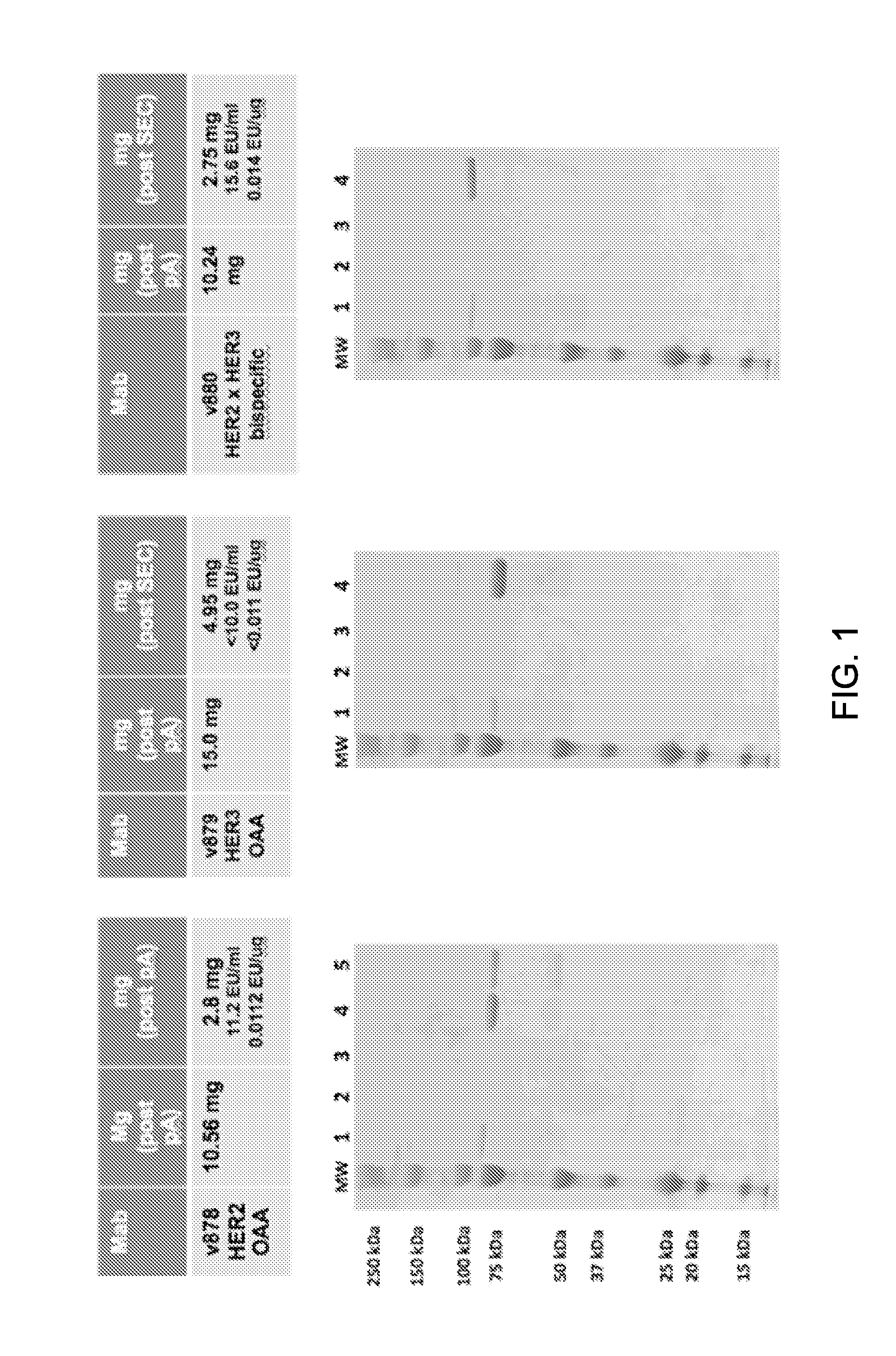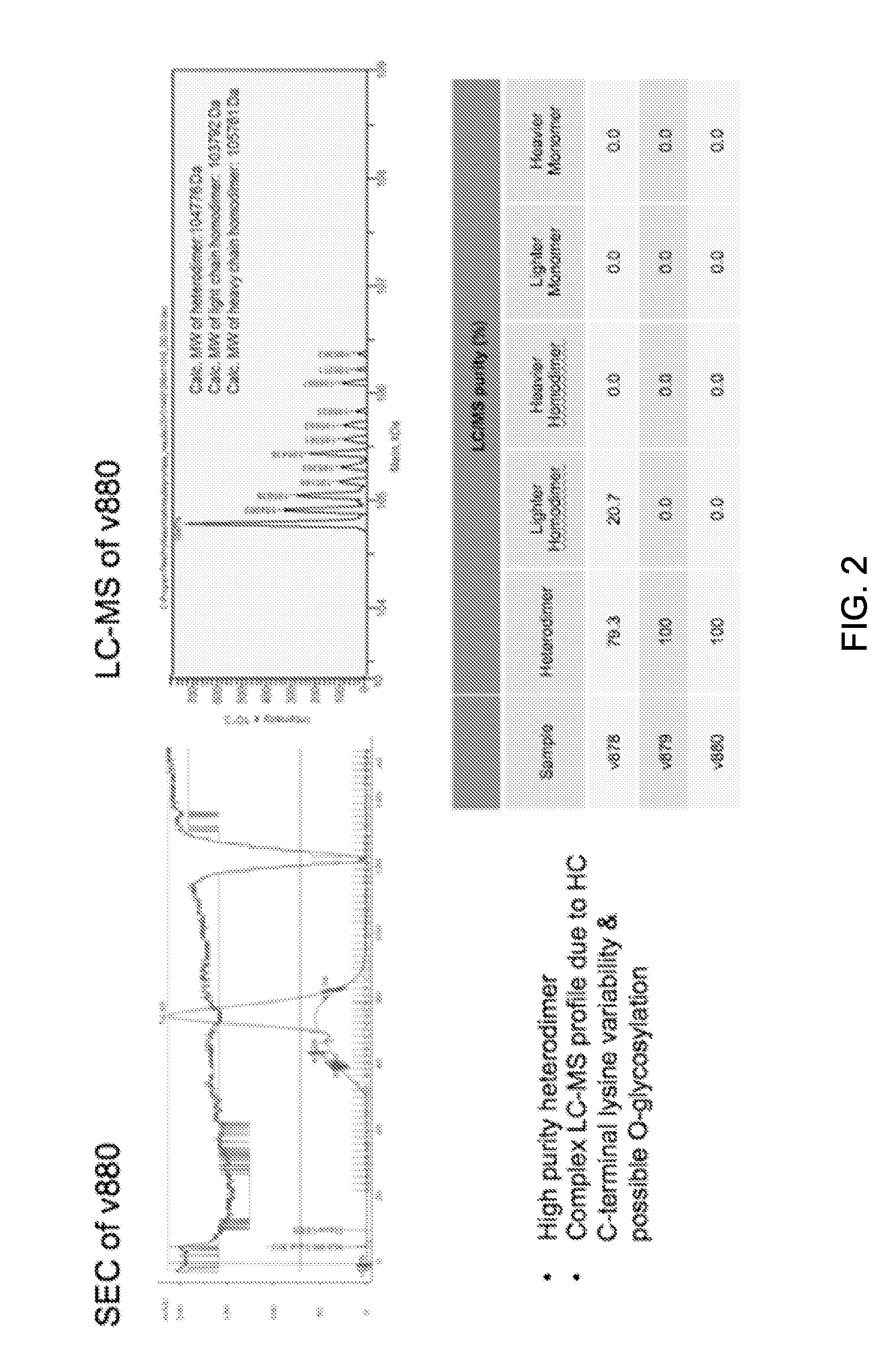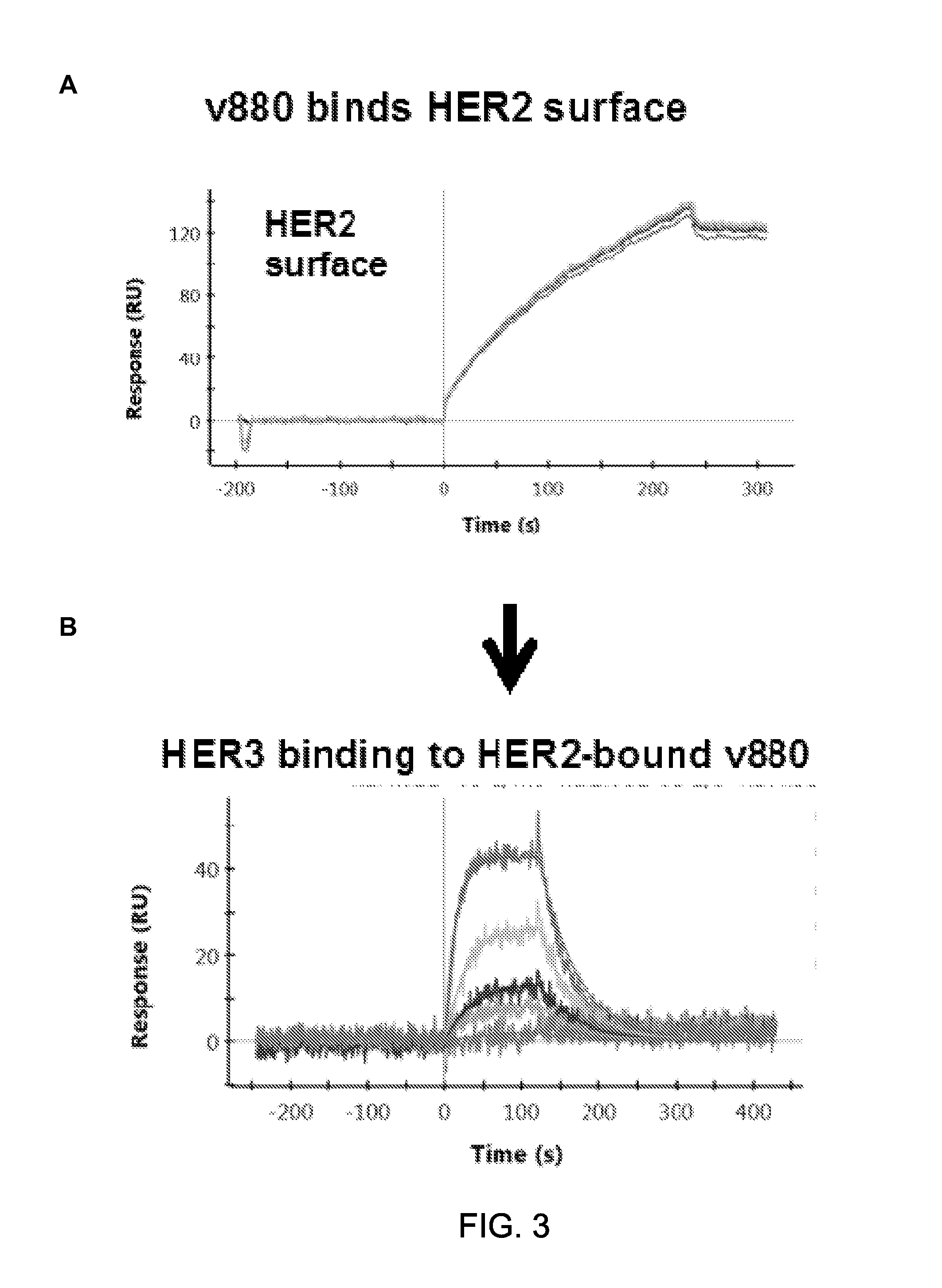Bispecific HER2 and HER3 Antigen Binding Constructs
a technology of antigen binding and her2 and her3, which is applied in the field of bispecific her2 and her3 antigen binding constructs, can solve the problems of insufficient efficacy of monospecific targeting, toxicity or other adverse events, and cannot mediate antibody-induced immune cytotoxicity
- Summary
- Abstract
- Description
- Claims
- Application Information
AI Technical Summary
Benefits of technology
Problems solved by technology
Method used
Image
Examples
example 1
Description of Exemplary Bi-Specific Antigen Binding Constructs (bsAbs) and Controls
[0354]A number of exemplary bi-specific antigen binding constructs, e.g., antibody constructs and controls were designed, as described below:
[0355]1. Variant 878: a monovalent anti-HER2 antibody, where the HER2 binding domain on chain A is an scFv that binds to ECD1 (B1D2), and the Fc region is a heterodimer having the mutations L351Y_F405A_Y407V in Chain A, and T366L_K392M_T394W in Chain B. The B1D2 scFv is described in International Patent Publication Nos. WO 2009 / 126920, and WO2010 / 059315A1 and binds to an epitope on HER2 that does not overlap with trastuzumab.
[0356]2. Variant 879: a monovalent anti-HER3 antibody, where the HER3 binding domain on chain B is an scFv (H3), and the Fc region is a heterodimer having the mutations L351Y_F405A_Y407V in Chain A, and T366L_K392M_T394W in Chain B. The H3 scFv is described in U.S. Pat. No. 7,332,580.
[0357]3. Variant 880: a bi-specific anti-HER2-HER3 antibod...
example 2
Transient CHO Expression, Purification and Yield of Exemplary bsAbs
[0361]The constructs described in Example 1 were expressed in CHO cells and purified as follows. The clarified culture medium was loaded onto a MabSelect SuRe™ (GE Healthcare) protein-A column and washed with 10 column volumes of PBS buffer at pH 7.2. The antibody constructs were eluted with 10 column volumes of citrate buffer at pH 3.6 with the pooled fractions containing the antibody neutralized with TRIS at pH 11. FIG. 1 depicts the results of the SDS-PAGE analysis for the monovalent antibody controls variant 878 (FIG. 1A) and variant 879 (FIG. 1B), as well as the bsAb variant 880 (FIG. 1C), after Protein-A purification. In the three gels shown in this figure, lane 1 represents the total expressed protein, lane 2 represents the flow through fraction, lane 3 represents the wash, and lane 4 represents the purified fraction. These results show that the monovalent control antibodies and the bsAb variant 880 express we...
example 3
BsAbs are Capable of Coengaging and Binding Both Human HER2 and HER3 as measured by SPR
[0380]The ability of an exemplary bsAb, variant 880 to bind to both targets, HER2 and HER3 was determined by SPR (Surface Plasmon Resonance) as follows using a ProteOn™ XPR36 system from BIO-RAD. HER-2 in buffer (10 mM Hepes pH 6.8) was immobilized on CMS chip through amine coupling until 3000 RU. Fc variants in an antibody format containing anti-HER2 antibodies were immobilized to the HER-2 surface to 300 RU. Running buffer and the surfactant was maintained at pH 6.8. Purified analyte Her3 was diluted in its running buffer and injected at a flow rate of 20-30 μL / min for 2 minutes, followed by dissociation for another 4 minutes. Five two-fold dilutions of each antibody beginning at 20 nM were analyzed in triplicate. Sensograms were fit globally to a 1:1 Langmuir binding model. All experiments were conducted at room temperature.
[0381]The results are shown in FIG. 3A and FIG. 3B and indicate that bo...
PUM
| Property | Measurement | Unit |
|---|---|---|
| Tm | aaaaa | aaaaa |
| Tm | aaaaa | aaaaa |
| Tm | aaaaa | aaaaa |
Abstract
Description
Claims
Application Information
 Login to View More
Login to View More - R&D
- Intellectual Property
- Life Sciences
- Materials
- Tech Scout
- Unparalleled Data Quality
- Higher Quality Content
- 60% Fewer Hallucinations
Browse by: Latest US Patents, China's latest patents, Technical Efficacy Thesaurus, Application Domain, Technology Topic, Popular Technical Reports.
© 2025 PatSnap. All rights reserved.Legal|Privacy policy|Modern Slavery Act Transparency Statement|Sitemap|About US| Contact US: help@patsnap.com



